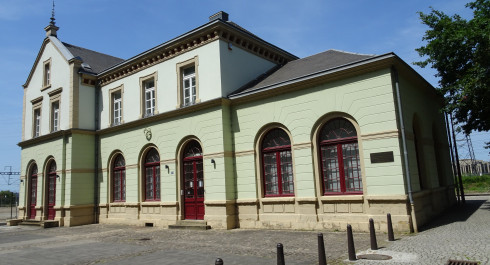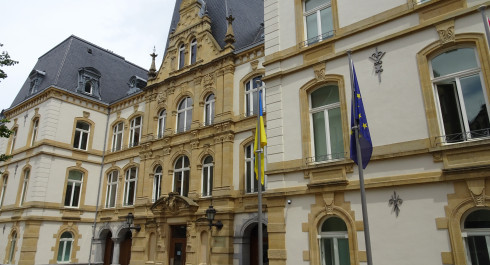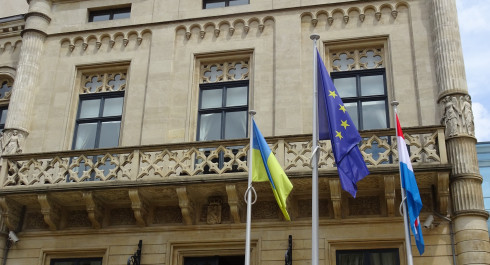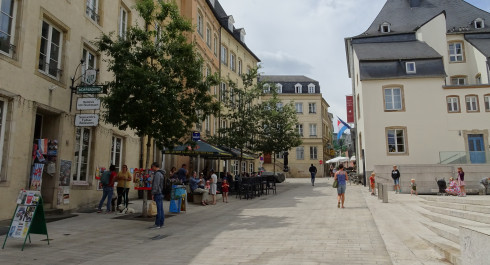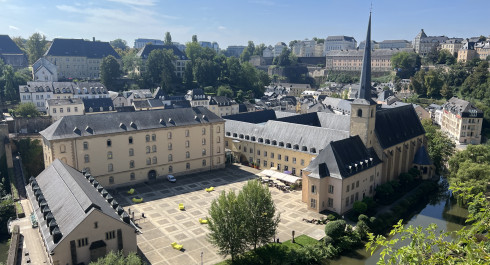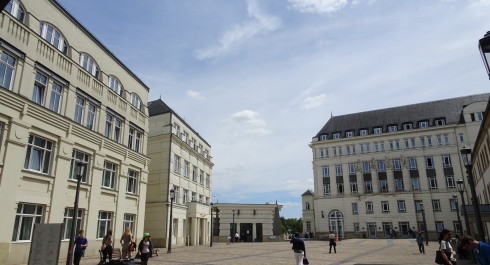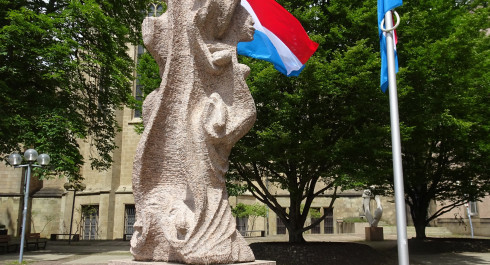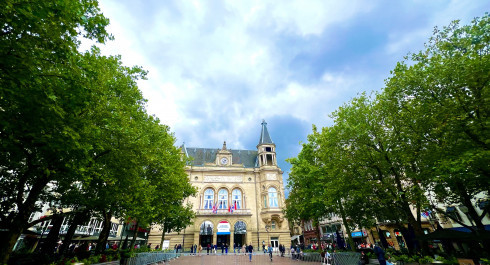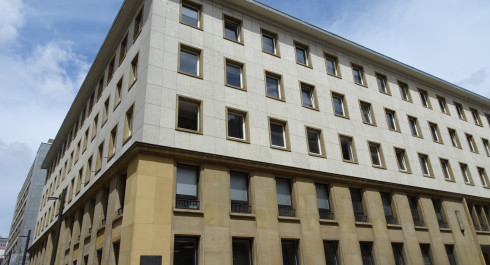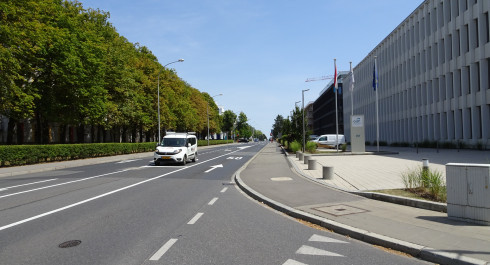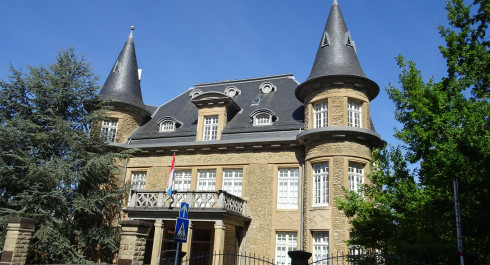
14. Villa Pauly
14. Villa Pauly
The Villa Pauly is located on the Boulevard de la Pétrusse which is part of the Bourbon Plateau. This quarter of the city only developed after the ramparts of the Luxembourg fortress were demolished. At the beginning of the 20th century, the urbanisation of this entire area was taken in hand and the Boulevard de la Pétrusse became one of the most desirable locations for wealthy citizens to build imposing mansions. Among these prominent people was the surgeon Dr Norbert Pauly whose magnificent villa with its eclectic architecture resembles a castle.
When in May 1940 the Nazi occupation of Luxembourg began, the Gestapo seized the building to make it its Luxembourg headquarters. Dr Pauly, on holiday in the south of France, had to accept the situation without protest.
During the German occupation of Luxembourg, the Villa Pauly became the centre of the Nazi reign of terror. The Gestapo brought all those persons suspected of being members of the resistance to the Nazi regime to its headquarters for interrogation where these Luxembourg citizens were subjected to increasingly brutal methods of torture. Following their intense questioning, the prisoners would be locked up in tiny dark underground cells and submitted to further torture in the boiler room to make them reveal the names of additional resistance members. An exceedingly cruel method was to suspend the unfortunate prisoner upside down from the heating pipes.
In addition, the Villa Pauly was the SS administrative and organisational headquarters for the deportation of the Luxembourg Jewish population.
After the Second World War, the Luxembourg government rented the Villa Pauly to accommodate a number of its ministries.
In April 1984, forty years after Luxembourg’s liberation from the Nazi reign of terror and in the presence of numerous government ministers, a commemorative plaque was unveiled next to the entrance gate to honour the numerous victims who suffered unimaginable physical torment. It is there as a reminder for future generations. Among those in attendance was also the former resistance fighter Emile Krieps.
Due to its great symbolic importance, the Villa Pauly became the seat of the ‘Conseil national de la Résistance‘. In addition, it houses the Research and Documentation Centre for the history of the Luxembourg Resistance Movement.
Interesting Detail
There are no photographs of the Villa Pauly from the period of Nazi occupation. It was only after the American army had liberated the capital in September 1944 that the Luxembourg photographer Tony Krier, who lived opposite the Villa Pauly, risked taking pictures of the German Gestapo’s retreat.
Significance for Human Rights
It was shortly after the end of World War II that the Villa Pauly became the most significant location of remembrance for all victims of Nazi terror in Luxembourg. To the present day, the building is a reminder of the Gestapo’s atrocities but also of the courage of the resistance fighters who risked their lives for Luxembourg’s freedom and the constitutional guarantee of its people’s fundamental civil rights.
Up to the present day, the Villa Pauly remains a symbol of resistance against all forms of terrorism as well as the suppression and disregard for human rights.
Article 5
Everyone has the right to be free from torture.
Article 9
Everyone has the right to freedom from arbitrary arrest, detention or exile.
Article 17
Everyone has the right to own property. Nobody has the right to take these from anyone without a good reason.

